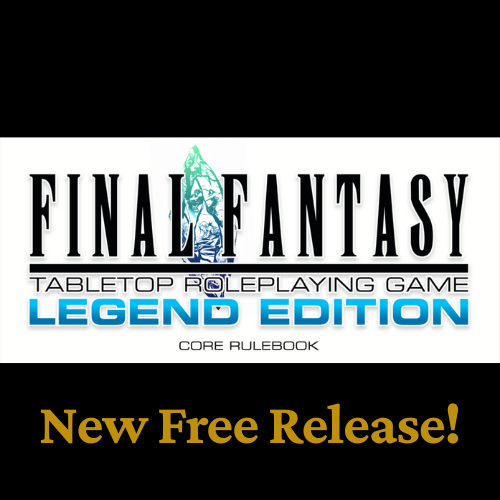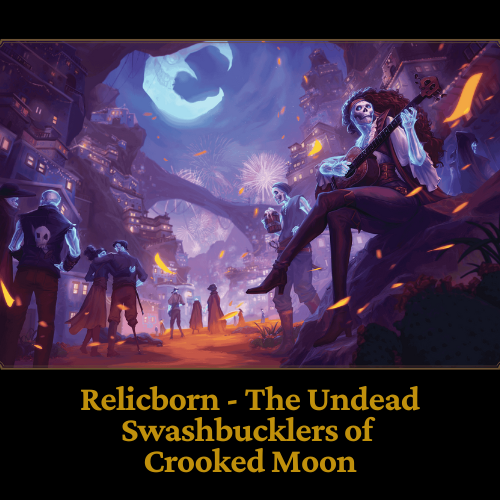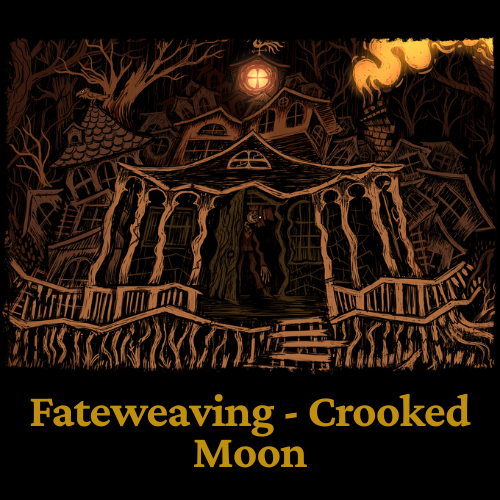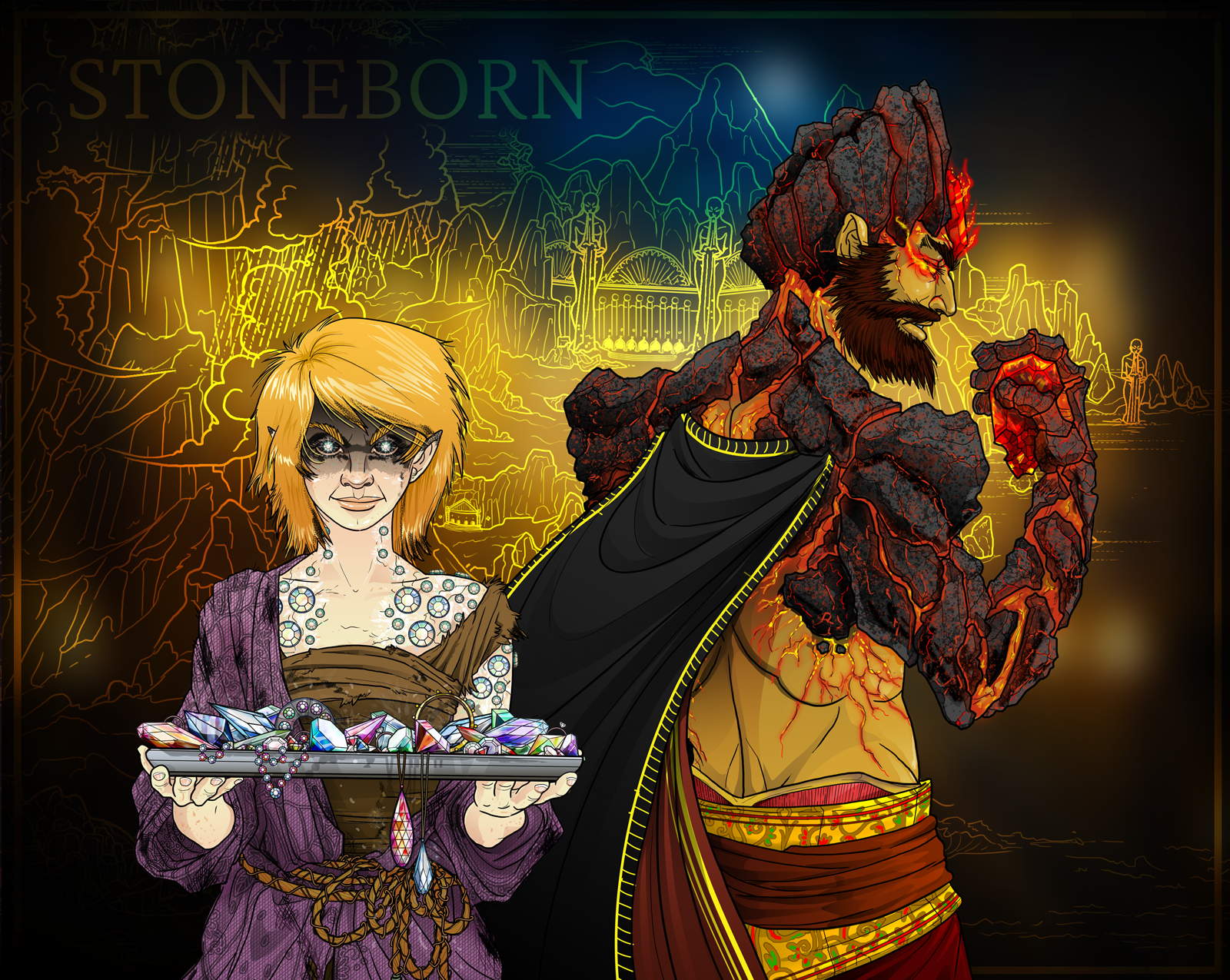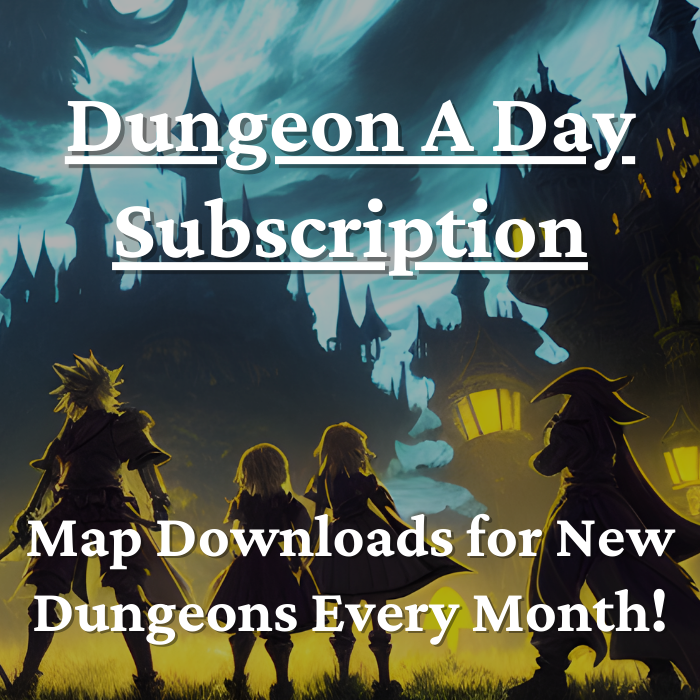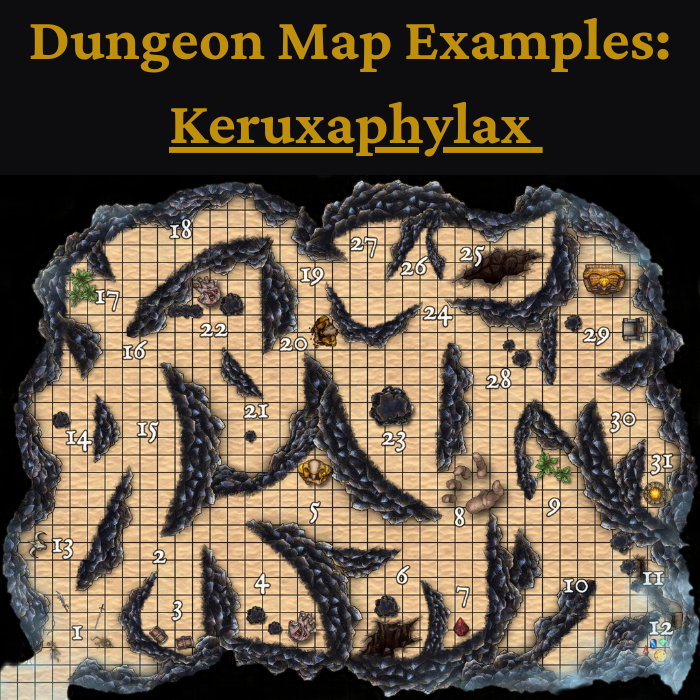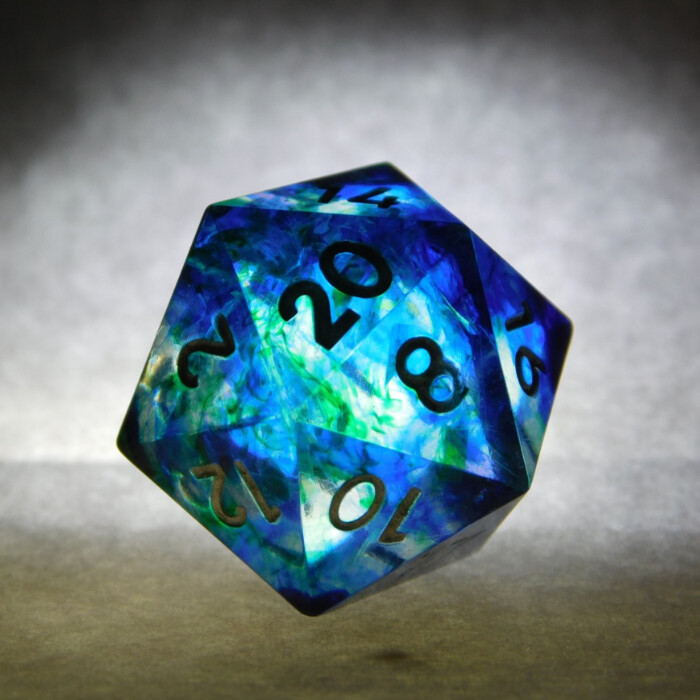Spiritual Weapon 5e Tactics
Spiritual Weapon 5e is the choice spell for players who want to deal effective force damage to enemies from a distance — a great spell that (surprisingly) isn’t concentration based, and only costs a bonus action.
Picture this scenario: you’re a cleric exploring the grimy streets of the kingdom’s destitute reaches. You see a woman being cornered into an alley, the brigands planning to beat her and take her money. They ignore your shouts, so you instead cast a powerful evocation spell. When the woman opens her eyes, she sees you and a floating broadsword — and the brigands lying unconscious (or dead) on the ground.
What did you do? You cast Spiritual Weapon 5e, a classic 2nd-level evocation spell that lets you make a ranged attack. If you’re a new player to
TTRPGs or a dungeon master in training, I’ll share a guide about the Spiritual Weapon 5e effect and how you can use it to your advantage in this 5e strategy guide.
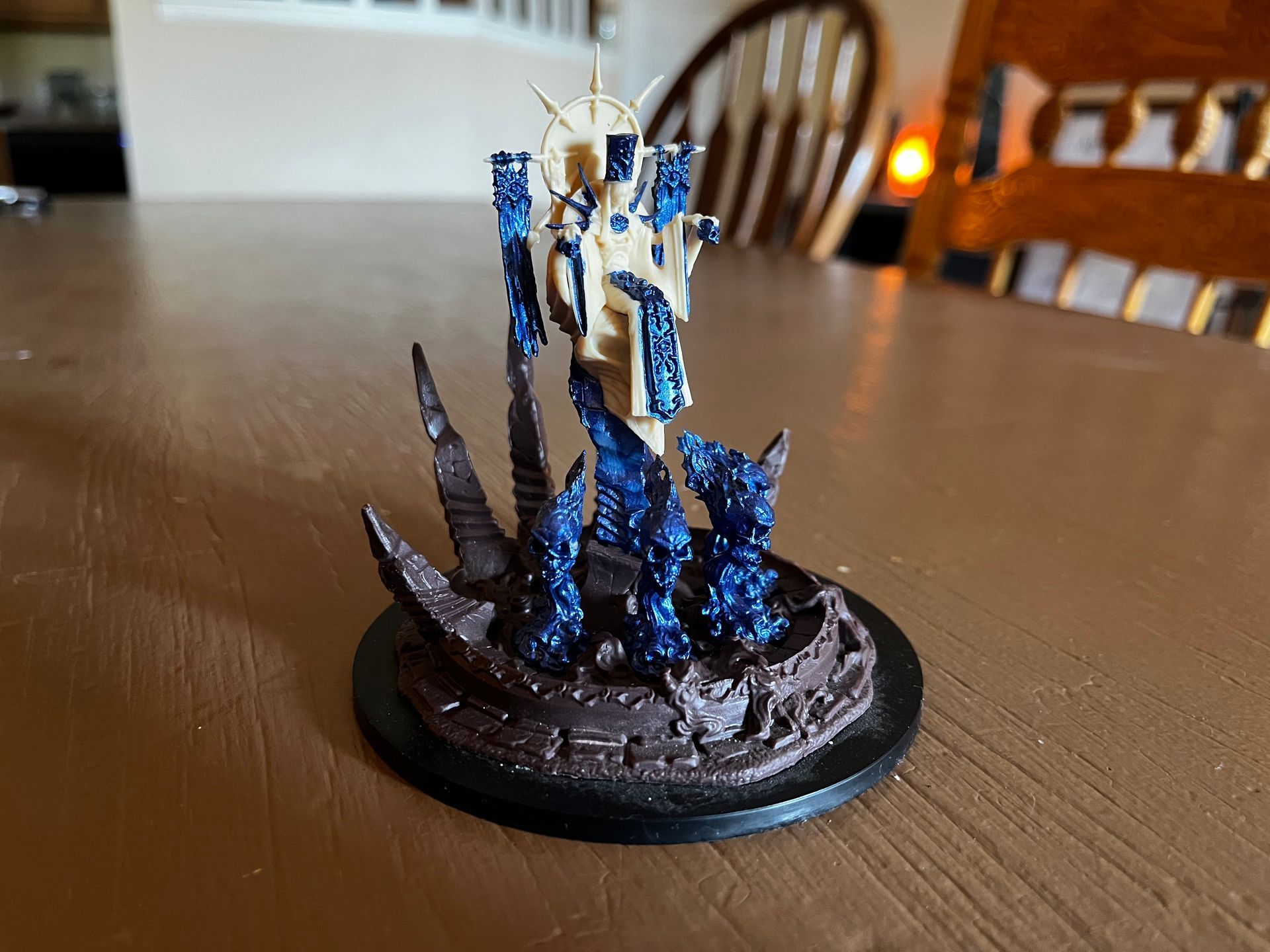
What Is the Spiritual Weapon 5e Spell?
According to the D&D 5th Edition Handbook, these are the official stats of the Spiritual Weapon 5e spell:
- Level: 2
- School: Evocation
- Casting Time: 1 bonus action
- Range: 60 feet
- Components: V, S
- Duration: 1 minute
You create a floating, spectral weapon within range that lasts for the duration or until you cast this spell again. When you cast the spell, you can make a melee spell attack against a creature within 5 feet of the weapon. On a hit, the target takes force damage equal to 1d8 + your spellcasting ability modifier.
For a bonus action, you can move the weapon up to 20 feet and repeat the attack against a creature within 5 feet of it.
The spectral weapon can appear however you want it to. If your character is a cleric of a deity that is known for a specific weapon or weapon style, the spell can resemble that weapon.
Casting Spiritual Weapon using a 3rd Level or higher spell slot increases the damage by 1d8 for every two slot levels above the 2nd.
The spell’s range of 60 feet is usually enough to attack a wide range of enemies, including flying creatures. The range also works for those who have limited movement. However, you may not be able to cast the spell while restrained, given how it requires somatic and verbal components.
How Spiritual Weapon 5e Works
Spiritual Weapon belongs to the cleric spell list and lasts for only one minute. It’s best used for melee attacks against creatures within five feet of the spectral weapon, but it's basically perfect for almost every RPG campaign.
I want to emphasize that the spell only works on creatures – including humans and humanoids – and that technically, you can’t use it on objects like doors or walls. If your dungeon master is kind though, you should be able to get around this technicality.
In terms of damage, Spiritual Weapon applies a 1d8+ ability modifier. Since clerics usually have a higher Wisdom modifier, you should get in solid damage on every hit.
Of course, you don’t have to focus all of your attacks on a single enemy. The advantage of the Spiritual Weapon 5e spell is that it can attack a different target on each bonus action. Plus, you can move it 20 feet further on every turn, as part of that same Bonus Action 5e.
The good stuff doesn’t end there. If you cast Spiritual Weapon with a high-level spell slot, the damage increases significantly. You can reduce your enemy’s hit points dramatically while you’re staying well away from their reach!
What Classes Can Use the Spiritual Weapon 5e Spell?
By default, clerics have the unique ability to cast Spiritual Weapon — a fitting spell for their divine magic. However, other classes can also pick up, learn, or acquire the spell:
- College of Lore: Bards, in general, can eventually learn Spiritual Weapon as they learn bits and pieces of magic through Magical Secrets. Lore bards have additional secret choices at the 6th Level, so you can choose Spiritual Weapon as a new spell.
- Divine Soul: Sorcerers under the Divine Soul subclass have access to either the cleric or sorcerer spell list (hence, why the subclass is extremely popular, but that’s just my personal observation). A Divine Soul sorcerer can learn Spiritual Weapon 5e as early as a cleric, at Level 3.
- Oath of Conquest: Paladins belonging to the Oath of Conquest subclass can learn Spiritual Weapon at Level 5. This addition makes sense because Oath of Conquest paladins are often combative in nature. However, you still have to wait two more levels before your character can fully exploit the spell. Giving a paladin a ranged attack makes them even better at offense.
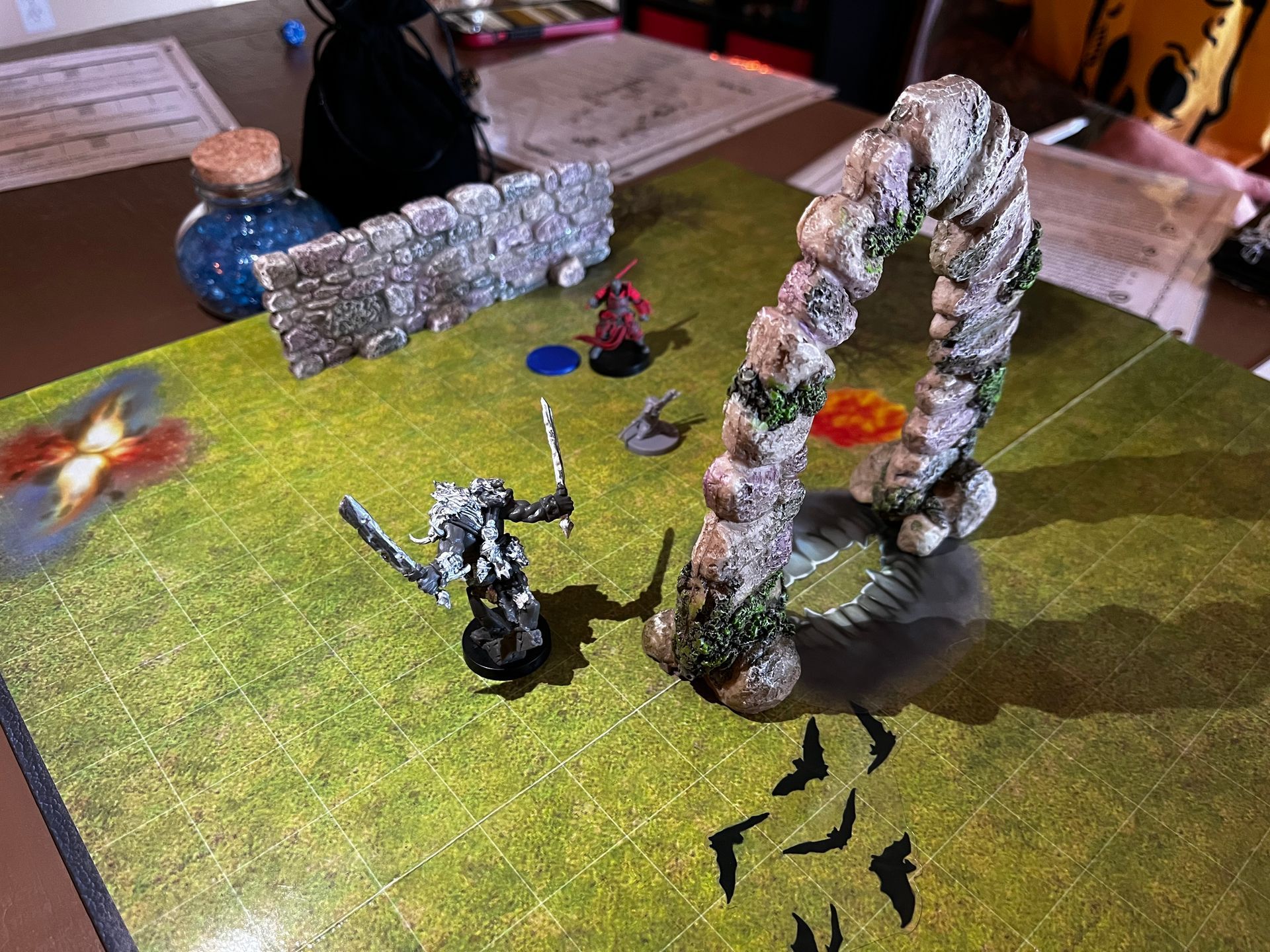
Spiritual Weapon For Players
As a spell that deals force damage, Spiritual Weapon is an ability to be reckoned with. Most other classes cannot resist force damage, making it effective at reducing the hit points of enemies, even if they have numerous other resistances.
As a non-concentration-based spell, Spiritual Weapon also allows you to cast other long-duration spells along with it, such as Bless 5e or Haste 5e. Similarly, you can also cast cantrip spells like Sacred Flame.
Since Spiritual Weapon is a bonus action, you’re free to use spell slots to further increase your damage against enemies, or provide protection and healing to allies, such as with Cure Wounds 5e. Thanks to these combinations, your character becomes a formidable opponent that your enemies will tremble to behold.
Though Spiritual Weapon 5e may have a little less of a "surprise" factor if you're playing single player DnD, it's also the type of spell that's valuable even if you aren't playing with a gaming group, or adventuring in a party.
Can Spiritual Weapons Critical Strike?
Seeing how the conjured weapon is spectral in nature, I understand why this is a frequent question among players. The short answer? Yes! Spiritual Weapon can critically strike since, by all technicalities, it’s still a melee spell attack. If you roll a natural 20, you’ll be able to hit with double damage. This condition applies even to subsequent attacks.
Ending the Spell
Each cast of Spiritual Weapon only lasts for a minute. But even though the duration is short, the conjured weapon cannot be destroyed. It doesn’t have hit points, nor can it take damage. In addition, Spiritual Weapon doesn’t stop if the caster is incapacitated or unconscious. The spell only ends after the set duration, or if it moves far enough away from the caster.
Counters to Spiritual Weapon 5e
As with virtually every spell in D&D, there are possible counters to the Spiritual Weapon effect. For example, if you are affected by Silence 5e, you won't be able to cast the spell to begin with. If you're affected by Cause Fear 5e or Charm Person 5e, similarly, you won't be able to attack your intended target, even if you have Spiritual Weapon already active.
Use Your Spiritual D&D Bag
Whether you're a player or a dungeon master, check out this awesome carrying bag designed for tabletop roleplaying. These bags have separate pouches for holding minis, dice, books, character sheets, space for maps, and even laptops.
If you're like me, you sometimes have a lot of things that you use for your tabletop gaming, and it's extremely convenient to have and carry everything in one compact space. You can also carry your DnD campaign planner in the bag to make your tabletop gaming experience complete.
Make your games stylish and easy to manage with a bag made for you, and that comes in custom colors that fit your play style.
Spiritual Weapon 5e For Dungeon Masters
As far as Dungeon Master tools go, you can grant the use of a Spiritual Weapon or use the spell to boost the destructive capabilities of any monster or foe. Because Spiritual Weapon is such a versatile spell, and naturally comes with many applications, it’s a sure value-added to any villain or their henchmen.
Allowing Players to Flank with Spiritual Weapon
It may seem like the Spiritual Weapon spell can serve as a tool for flanking, or when two allies are within five feet of an enemy’s opposite sides.
Flanking is a great way to get a melee attack advantage. However, this strategy requires creatures to be on either side of the opponent. Some players may argue that the Spiritual Weapon, sent by the caster to the opposite side of the enemy, counts as flanking. I’ll be clear though: it’s not. Technically.
You need allied creatures to get the melee attack advantage from flanking. Technically. Seeing as Spiritual Weapon is simply a weapon, it doesn’t meet the qualifications. If your players attempt to get extra damage through “flanking” with the spell, don’t grant it unless you plan to allow Spiritual Weapon to quite significantly increase in power.
Spiritual Weapon Aesthetics
The type of weapon a cleric or Divine Soul sorcerer can summon adds flavor to your DnD characters and DnD campaign ideas. Since these classes primarily use Divine Magic and are associated with a religious figure, you can make it so that their Spiritual Weapon manifests into something associated with their religion. For example, a cleric that follows Thor can have a Spiritual Weapon that looks like his hammer.
For Lore bards who eventually learn the spell, the weapon could deal thunder damage when used with other spells innate to the caster. You can also include demigods, divine emissaries, and lesser gods who can cast Spiritual Weapon.
Allowing Enemies to Cast Spiritual Weapon 5e
Consider challenging your players by including enemies that can cast Spiritual Weapon 5e.
In some of the official settings, you have characters that can perform the spell like the Mummy Lord, Choldrith, and Sahuagin Priestess. If you need some DnD quest ideas or ideas for DnD one shots, you can also add similar characters to your campaign and have them cast Spiritual Weapon too, for an added surprise to your players.
Utilize Spiritual Weapon for Additional Excitement
Spiritual Weapon is a great ranged spell attack, hitting enemies as far as 60 feet away. Since it’s also cast with a bonus action, Spiritual Weapon can be used with cantrips and other spells to enhance either one’s effects. This spell is thus a handy skill to learn for clerics, Divine Soul sorcerers, Lore bards, and Oath of Conquest paladins.
Since the spell can effectively attack from a range (from the player's perspective), it's also excellent for helping to avoid a TPK DnD.
With the details and strategies I shared, you can hopefully take advantage of this versatile spell for your upcoming campaigns. Your character, depending on the class, needs to only be at least Level 3 to cast it — which should be easy enough to achieve in longer campaigns.
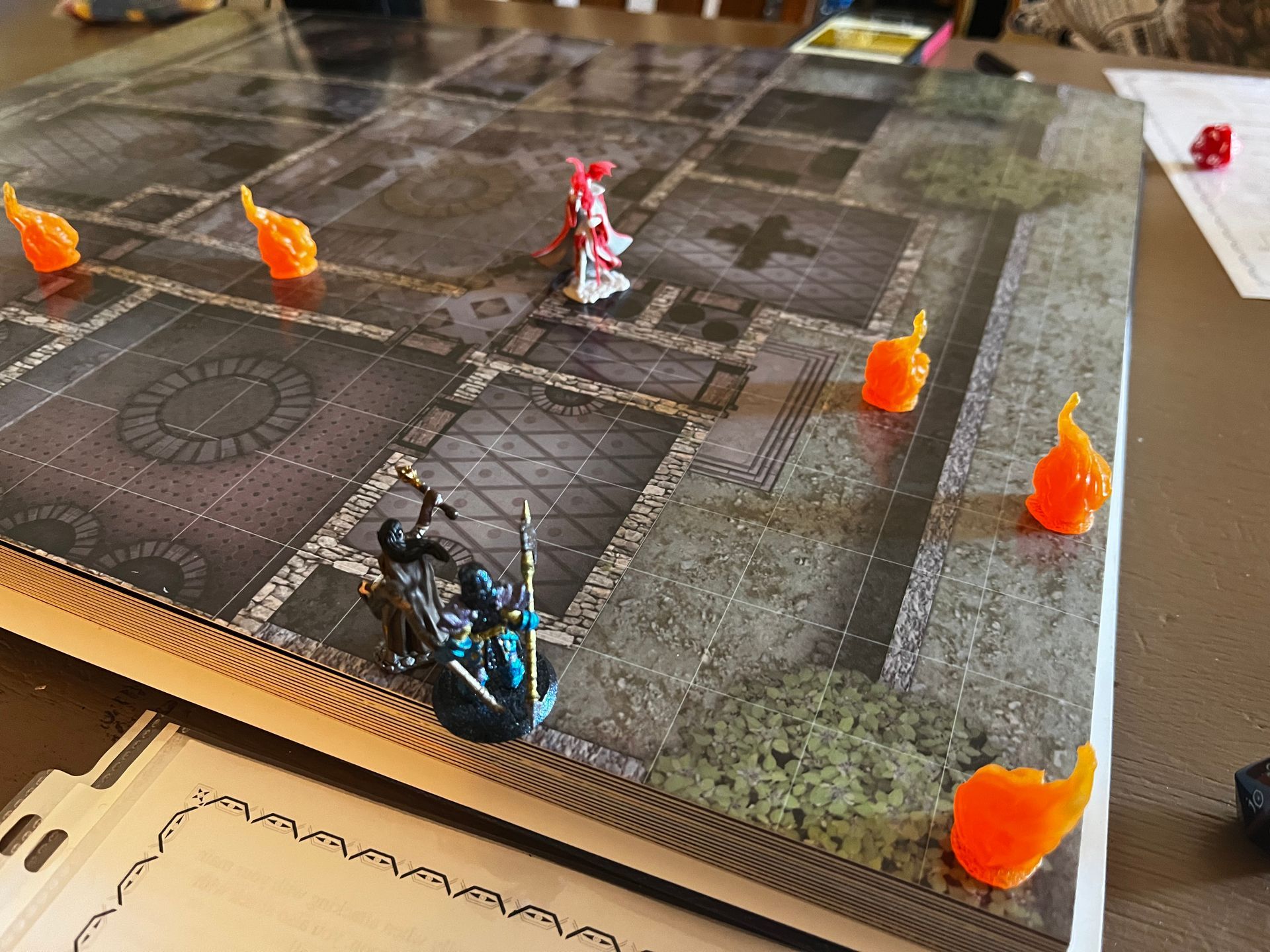
Spiritual Weapon in D&D 5e vs. Eternity TTRPG
Though Spiritual Weapon is a distinctly D&D 5e spell, the Eternity TTRPG Game System offers many spell and ability effects that closely resemble Spiritual Weapon 5e.
In D&D 5e, Spiritual Weapon creates a magical weapon that floats around according to the caster’s will, and strikes at enemies every round when a Bonus Action is expended. Similarly, in the Eternity TTRPG Game System, numerous spells and abilities may be “maintained,” which allow for extra attacks or damage each round of combat.
What Classes in Eternity TTRPG Use Spiritual Weapon?
There are many core classes and expansion classes that can use spiritual weapon-like effects, and many more classes that also gain similar effects through their spell and ability critical options.
Though most of these spell and ability effects are not the exact same as spiritual weapon, you’ll notice how similarly they act, as far as mechanics go – creating a mobile attacking unit, effectively.
Dragon Knight – Core Class Ability
Dragon Heart: you forever soul-bind with a dragon, becoming its lifelong companion.
The “Dragon” and dragon knight share
HP and Wisdom, and the “Dragon” has stats otherwise the same as the dragon
knight. However, due to the immense effort it requires to maintain mental connection with the “Dragon,” you permanently have -10Initiative.
On the “Dragon’s” turn, it may use any
Action, spell, or ability, available to the dragon knight. The “Dragon” acts on the
same turn as the dragon knight.
The “Dragon” always has the same stats
as the dragon knight, whether from level increases, buffs, or debuffs. If the “Dragon” or dragon knight receives a buff or debuff, it also affects the other. “Dragon” does not count as a summoned unit. Once this ability is chosen it becomes a passive effect, always active, and cannot be dispelled.
- (Winged Death) You instead have only -9Initiative. You can choose to maintain this critical for 2Inspiration (and 0Wisdom).
- (Knight of the Blood Oath) You also gain +3Resilience, +3Dodge, and +3Will. You can instead choose to maintain this critical for 3Inspiration (and 0Wisdom).
- (Memories of Tarscisia) If either the dragon knight or “Dragon” is Dazed, Afraid, or Taunted, the other is not affected. You can instead choose to maintain this critical for 3Inspiration (and 0Wisdom).
Druid – Core Class Ability
Spirit Animal: you summon an animal companion with 1HP and Stats otherwise the same as the druid’s, except with -5Resilience, -5Dodge, and -5Will. On “Spirit Animal’s” turn, choose an enemy in 1Range, and roll d20. If you roll 18-20, “Spirit Animal” attacks, automatically dealing 1damage. “Spirit Animal” may also use “Charge” (see Chapter 14, “Additional Actions” - you may use Faith vs. Resilience to do so, if you so choose), but doing so reduces the druid’s Wisdom. “Spirit Animal” acts on the same turn as the druid.
“Spirit Animal” always has the same
Stats as the druid, whether from level increases, buffs, or debuffs. If the druid
receives a debuff, it also affects the “Spirit Animal.” However, “Spirit Animal” is immune to both Wisdom damage and debuffs that cause recurring damage.
It takes 15minutes to summon/ tame a
“Spirit Animal,” so a new “Spirit Animal” cannot be created during Combat. You
can only have one “Spirit Animal” active at a time. You continually maintain “Spirit Animal” for 3Inspiration.
(Dazed): while you are Dazed, “Spirit
Animal” is also Dazed.
- (Nature’s Wrath) You instead have two (2) “Spirit Animals” active at a time, and they each only have -1Reslience, -1Dodge, and -1Will. You continually maintain this Critical for 5Inspiration (and 0Wisdom).
- (Nature’s Healing) Your “Spirit Animal” instead has 2HP. The next time you or an ally take damage while adjacent to your “Spirit Animal,” roll d20. If you roll 6-20, your “Spirit Animal” instead takes that damage.
- (Primal) Your “Spirit Animal” instead has 2HP, and has +4Strike Bonus when using “Charge.” You continually maintain this Critical for 5Inspiration (and 0Wisdom).
Nether Knight – Core Class Spell
Phantom Image (Magic): 1Range, creates a “Phantom Image” of yourself. Allies and enemies are able to tell which is you and which is your “Phantom Image.”
If a “Phantom Image” is attacked, it is
automatically dispelled. “Phantom Images” have the same Speed as the nether knight. In order for a “Phantom Image” to attack, it must be within a number of spaces of the nether knight equal to the nether knight’s Speed value. If that condition is met, on “Phantom Image’s” turn, choose an enemy in 1Range, and roll d20. If you roll 18-20, “Phantom Image” attacks, automatically dealing 1damage. “Phantom Images” act on the same turn as the nether knight.
If the nether knight receives a debuff, it
also affects “Phantom Images.” However, “Phantom Images” are immune to both
Wisdom damage and debuffs that cause recurring damage.
You can create and control an
unlimited number of “Phantom Images.”
(Dazed): while you are Dazed,
“Phantom Images” are also Dazed.
- (Fallen Star) Creates two (2) “Phantom Images.”
- (Phantom Soul) Move up to your Speed value before or after casting this spell. You can also move up to 4Speed before or after casting this spell, for Battle Duration.
- (Elemental Chaos) Also, any time any of your “Phantom Images” is attacked, roll d20. If you roll 16-20, they are not dispelled. This critical effect stacks with the effect from “Phantom Mists.”
Summoner – Core Class Spell
Summon (Magic): you create a wondrous beast of your choice with 1HP and Stats otherwise the same as the summoner’s, except with -5Resilience, -5Dodge, and -5Will. On the “Summon’s” turn, choose an enemy in 1Range, and roll d20. If you roll 18-20, the “Summon” attacks, automatically dealing 1damage. “Summon” may also use “Charge” (see Chapter 14, “Additional Actions” - you may use Faith vs. Resilience to do so, if you so choose), but doing so reduces the summoner’s Wisdom. “Summon” acts on the same turn as the summoner.
“Summon” always has the same Stats
as the summoner, whether from level increases, buffs, or debuffs. If the summoner
receives a debuff, it also affects the “Summon.” However, “Summon” is immune to both Wisdom damage and debuffs that cause recurring damage.
“Summon” uses at least 3Intelligence to
maintain. For every additional 3Intelligence used to individually maintain a
“Summon,” the “Summon” roll 3 numbers lower to deal damage, and gains +1HP.
It takes 15minutes to create a new
“Summon,” so a new “Summon” cannot be created during Combat. You can only have one “Summon” active at a time, until you reach 21+ Intelligence used.
(Dazed): while you are Dazed, your
“Summon” is also Dazed.
- (Summoning) All “Summons” also have 2Range with their attacks. You can instead choose to continually maintain this Critical for 1Inspiration (plus the base Intelligence used per “Summon,” and 0Wisdom).
- (Mystic Infusion) Every turn, one of your “Summons,” at your choice, rolls a d20. If you roll 18-20, they either heal you (at any distance), themself or one ally in 4Range +1HP, at your choice. This Critical allows affected targets to heal 1HP above their normal max HP. Healing from this effect also Fatigues the target, giving -1Resilience, -1Dodge, and -1Will for 1Day Duration (can stack without limit). You can instead choose to continually maintain this Critical for 2Inspiration (plus the base Intelligence used per “Summon,” and 0Wisdom).
- (Enhanced Gateways) This Critical can only be used if one of your “Summons” drops to 0HP or is dispelled. Instant Action. Create another “Summon” within 12Range of you that has 1HP left. This effect still applies if you intentionally dispel your “Summon.” 1Day Recharge.

Strategies for using Spiritual Weapon-Like Effects
In D&D, Spiritual Weapon 5e is technically not a “summoned unit,” like its likeness is in the Eternity TTRPG Game System. With the Eternity TTRPG equivalents being summons, however, they come with a host of beneficial options, when it comes to combat (and more).
Cause Additional Damage
The most obvious way to utilize summons is to position them near enemies so that they can attack them with you every round. It Eternity TTRPG, summons also deal “pierce damage,” meaning that targets of their attacks do not get to make a defensive roll to dodge the attack.
Summons are also therefore especially wonderful choices for healers or support characters in a team, as their summons can move around and deal damage in a fight, without the need for any attack-based stats on the summoner.
Daze Enemies with a Charge
One of the absolute best parts of summons is their ability to “Charge” enemies. On a successful Charge, the summoned unit not only moves adjacent to the enemy they’re attacking, but they also “Daze” them for 2turns.
While Dazed, character’s effects are generally interrupted, and they aren’t generally able to move, attack, or cast spells, but only defend (or in some cases, use items).
If you can have your summon successfully Charge an enemy for you, then you can meanwhile spend your turn dealing damage to that enemy, or using other vital spells or abilities that benefit your group.
Soak Up Damage for the Group
One of the other big benefits of using summons is that you can position them in the way of enemies. Rather than yourself or an ally taking damage in an important fight, why not have your summon soak up some damage instead?
Utilize Summons for Scouting
Finally, any sentient being can provide scouting, especially if they are “expendable” summons. Though this point wouldn’t be applicable in D&D 5e, as Spiritual Weapon isn’t itself a conscious being, summons in Eternity TTRPG may run recon for the adventuring group, or even sacrifice themselves down a hallway of traps.
Interested in the Eternity TTRPG Game System?
If you’ve been playing D&D for years, and have been thinking about checking out a new tabletop RPG system, take a look at Eternity TTRPG.
The Eternity TTRPG Game System probably falls somewhere between D&D 5e and D&D 4e, in terms of game mechanics and how it’s played. The game features highly tactical combat encounters, and allows groups the options (rules included) for multiple DMs.
Eternity TTRPG is also currently getting an upgrade to the core rulebook’s graphic design and artwork. If you purchase today, we’ll be sure to send you the latest version as soon as it’s ready (should be around Christmas time this year). Happy gaming!
Dice, Dungeons, Games & More - Eternity TTRPG
Share This Article

Author - Jacob Tegtman
Dear reader, I hope you enjoyed this article. Tabletop gaming has been a passion of mine since I was 6 years old. I've played just about every game from Dungeons and Dragons to video games like Final Fantasy. These games have inspired me, made me laugh, made me cry, and brought me endless hours of enjoyment.
I started Eternity TTRPG - and the indie tabletop game that goes along with it (Eternity Shop) - to share my love of gaming with others. I believe that in our technology-driven age, tabletop games help bring a sense of magic and community back into our world.
If you love the site, please share it with others! I have lots of gaming-related material for you to peruse and use in your own gaming sessions. If you have any questions about the site or want to contribute, just send me a message using the "Contact" page, which you can find in the site's footer.
